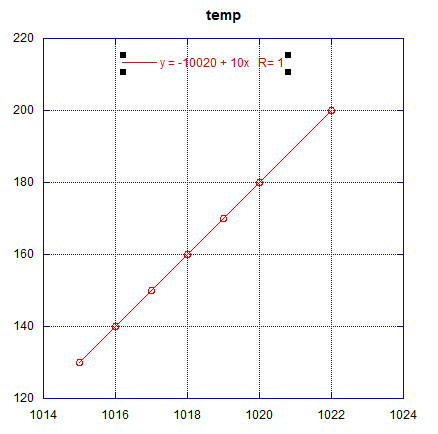Im stuck on getting the arduino to see the index.htm file. any ideas?
#include <SD.h> // The SD library allows for reading from and writing to SD cards
#include <SPI.h>
#include <Ethernet.h>
#define REQ_BUF_SZ 50 // size of buffer used to capture HTTP requests
byte mac[] = { 0xDE, 0xAD, 0xBE, 0xEF, 0xFE, 0xED }; // MAC address from Ethernet shield sticker under board (if present)
IPAddress ip(192, 168, 0, 106); // Enter your IP address found using IP address finder in a previous lecture
EthernetServer miniServer(80);
File SdCardFile; // the web page file on the SD card
boolean SWITCH_state[4] = {0}; // stores the states of the Switches
char HTTP_request[REQ_BUF_SZ] = {0}; // buffered HTTP request stored as null terminated string
char request_index = 0; // index into HTTP_req buffer
void setup()
{
// For the Ethernet shield to work properly, you must make pin 10 an output and high before initializing the SD card as
// both the SD card and Ethernet controller cannot use the SPI bus simultaneously.
pinMode(10, OUTPUT);
digitalWrite(10, HIGH);
pinMode(5, OUTPUT); // Switch #1
pinMode(6, OUTPUT); // Switch #2
pinMode(7, OUTPUT); // Switch #3
pinMode(8, OUTPUT); // Switch #4
// Initialize Switches
digitalWrite(5, HIGH);
digitalWrite(6, HIGH);
digitalWrite(7, HIGH);
digitalWrite(8, HIGH);
Serial.begin(9600); // for debugging only
Ethernet.begin(mac, ip); // initialize Ethernet device
miniServer.begin();
// initialize SD card
Serial.println("Initializing SD card...");
if (!SD.begin(4)) {
Serial.println("ERROR - Bad or missing SD card");
return;
}
Serial.println("SUCCESS - SD card found");
if (!SD.exists("fts")) { // check the file system to see if their is a file named index.htm
Serial.println("ERROR - Can't find fts file!");
return;
}
Serial.println("SUCCESS - Found fts file.");
}
void loop()
{
// listen for incoming clients
EthernetClient client = miniServer.available();
if (client) {
// an http request ends with a blank line
boolean currentLineIsBlank = true;
while (client.connected()) {
if (client.available()) { // Returns the number of bytes available for reading
char c = client.read(); // read 1 byte (character) from client
if (request_index < (REQ_BUF_SZ - 1)) { // buffer first part of HTTP request in HTTP_req array
HTTP_request[request_index] = c; // save HTTP request character
request_index++;
}
// if you've gotten to the end of the line (received a newline
// character) and the line is blank, the http request has ended,
// so you can send a reply
if (c == '\n' && currentLineIsBlank) {
// send a standard http response header
client.println("HTTP/1.1 200 OK");
// remainder of header follows below, depending on if
// web page or XML page is requested
// Ajax request - send XML file
if (StrContains(HTTP_request, "ajax_inputs")) {
// send rest of HTTP header
client.println("Content-Type: text/xml");
client.println("Connection: keep-alive");
client.println();
// send XML file containing input states
SetSWITCHES();
XML_response(client);
}
else {
// web page request
// send rest of HTTP header
client.println("Content-Type: text/html");
client.println("Connection: close");
client.println();
// send web page
SdCardFile = SD.open("index.htm"); // open web page file
if (SdCardFile) {
while(SdCardFile.available()) {
client.write(SdCardFile.read()); // send web page to client
}
SdCardFile.close();
}
}
// display received HTTP request on serial port
Serial.println(HTTP_request);
// reset buffer index and all buffer elements to 0
request_index = 0;
StrClear(HTTP_request, REQ_BUF_SZ);
break;
}
if (c == '\n') {
// you're starting a new line
currentLineIsBlank = true;
}
else if (c != '\r') {
// you've gotten a character on the current line
currentLineIsBlank = false;
}
} // end of client.available
} // end of client.connected
delay(1); // give the web browser time to receive the data
client.stop(); // close the connection
}
}
char StrContains(char *str, char *sfind)
// searches for the string sfind in the string str, returns 1 if string found or returns 0 if string not found.
{
char found = 0;
char index = 0;
char len;
len = strlen(str);
if (strlen(sfind) > len) {
return 0;
}
while (index < len) {
if (str[index] == sfind[found]) {
found++;
if (strlen(sfind) == found) {
return 1;
}
}
else {
found = 0;
}
index++;
}
return 0;
}
void XML_response(EthernetClient cl)
{
// Sending Gauge Values to webclient
cl.print("<?xml version = \"1.0\" ?>");
cl.print("<inputs>");
// Sending SWITCH states to dashboard
// SWITCH #1
cl.print("<SW>");
if (SWITCH_state[0]) {
cl.print("checked");
}
else {
cl.print("unchecked");
}
cl.println("</SW>");
// SWITCH #2
cl.print("<SW>");
if (SWITCH_state[1]) {
cl.print("checked");
}
else {
cl.print("unchecked");
}
cl.println("</SW>");
// SWITCH #3
cl.print("<SW>");
if (SWITCH_state[2]) {
cl.print("checked");
}
else {
cl.print("unchecked");
}
cl.println("</SW>");
// SWITCH #4
cl.print("<SW>");
if (SWITCH_state[3]) {
cl.print("checked");
}
else {
cl.print("unchecked");
}
cl.println("</SW>");
cl.print("</inputs>");
}
void SetSWITCHES(void)
// checks if received HTTP request is switching any of our switches
{
// SWITCH #1
if (StrContains(HTTP_request, "SW1=1")) {
SWITCH_state[0] = 1; // save SWITCH state
digitalWrite(5, LOW);
}
else if (StrContains(HTTP_request, "SW1=0")) {
SWITCH_state[0] = 0; // save SWITCH state
digitalWrite(5, HIGH);
}
// SWITCH #2
if (StrContains(HTTP_request, "SW2=1")) {
SWITCH_state[1] = 1; // save SWITCH state
digitalWrite(6, LOW);
}
else if (StrContains(HTTP_request, "SW2=0")) {
SWITCH_state[1] = 0; // save SWITCH state
digitalWrite(6, HIGH);
}
// SWITCH #3 (
if (StrContains(HTTP_request, "SW3=1")) {
SWITCH_state[2] = 1; // save SWITCH state
digitalWrite(7, LOW);
}
else if (StrContains(HTTP_request, "SW3=0")) {
SWITCH_state[2] = 0; // save SWITCH state
digitalWrite(7, HIGH);
}
// SWITCH #4
if (StrContains(HTTP_request, "SW4=1")) {
SWITCH_state[3] = 1; // save SWITCH state
digitalWrite(8, LOW);
}
else if (StrContains(HTTP_request, "SW4=0")) {
SWITCH_state[3] = 0; // save SWITCH state
digitalWrite(8, HIGH);
}
}
void StrClear(char *str, char length)
// sets every element of str to 0 (clears array)
{
for (int i = 0; i < length; i++) {
str[i] = 0;
}
}

